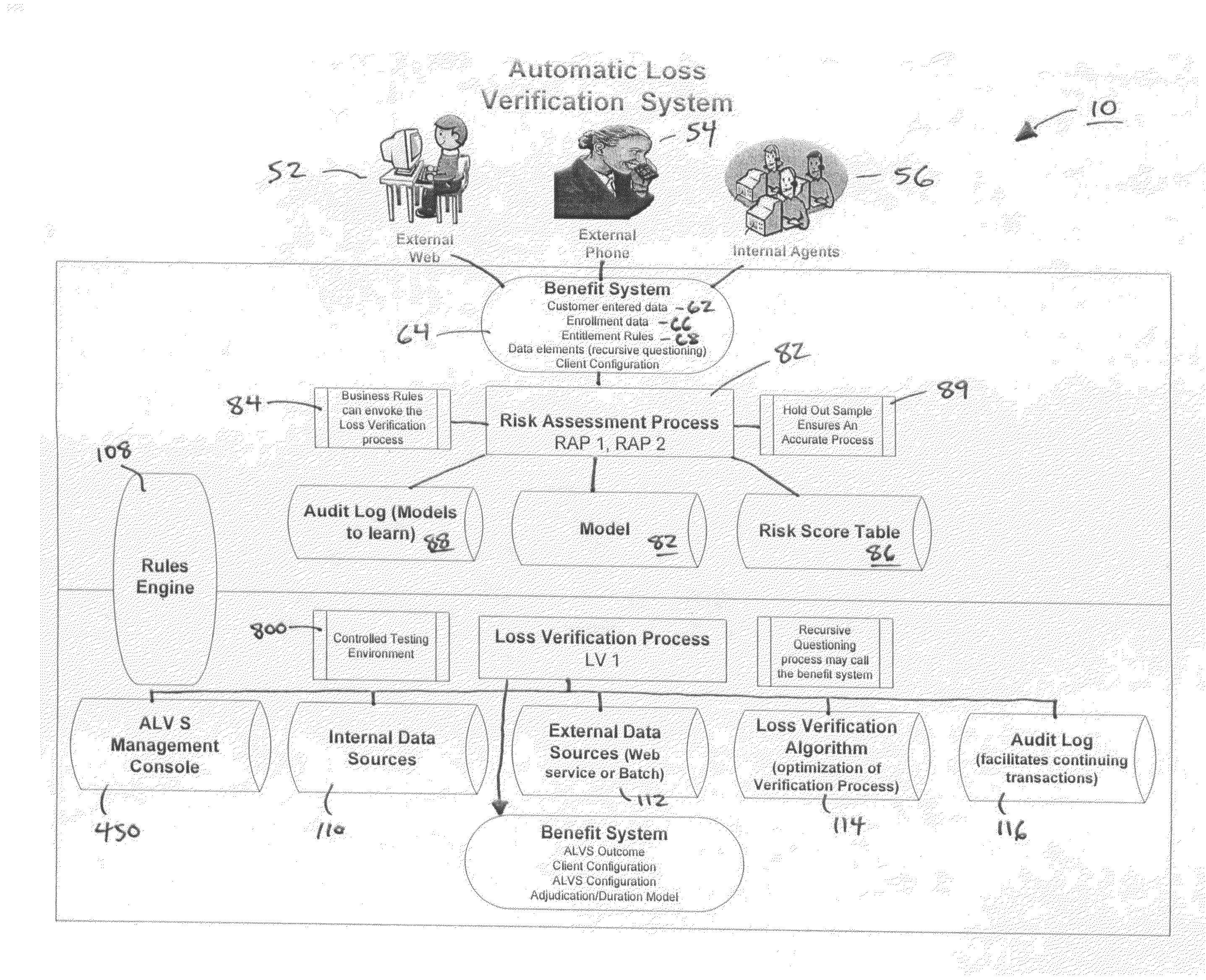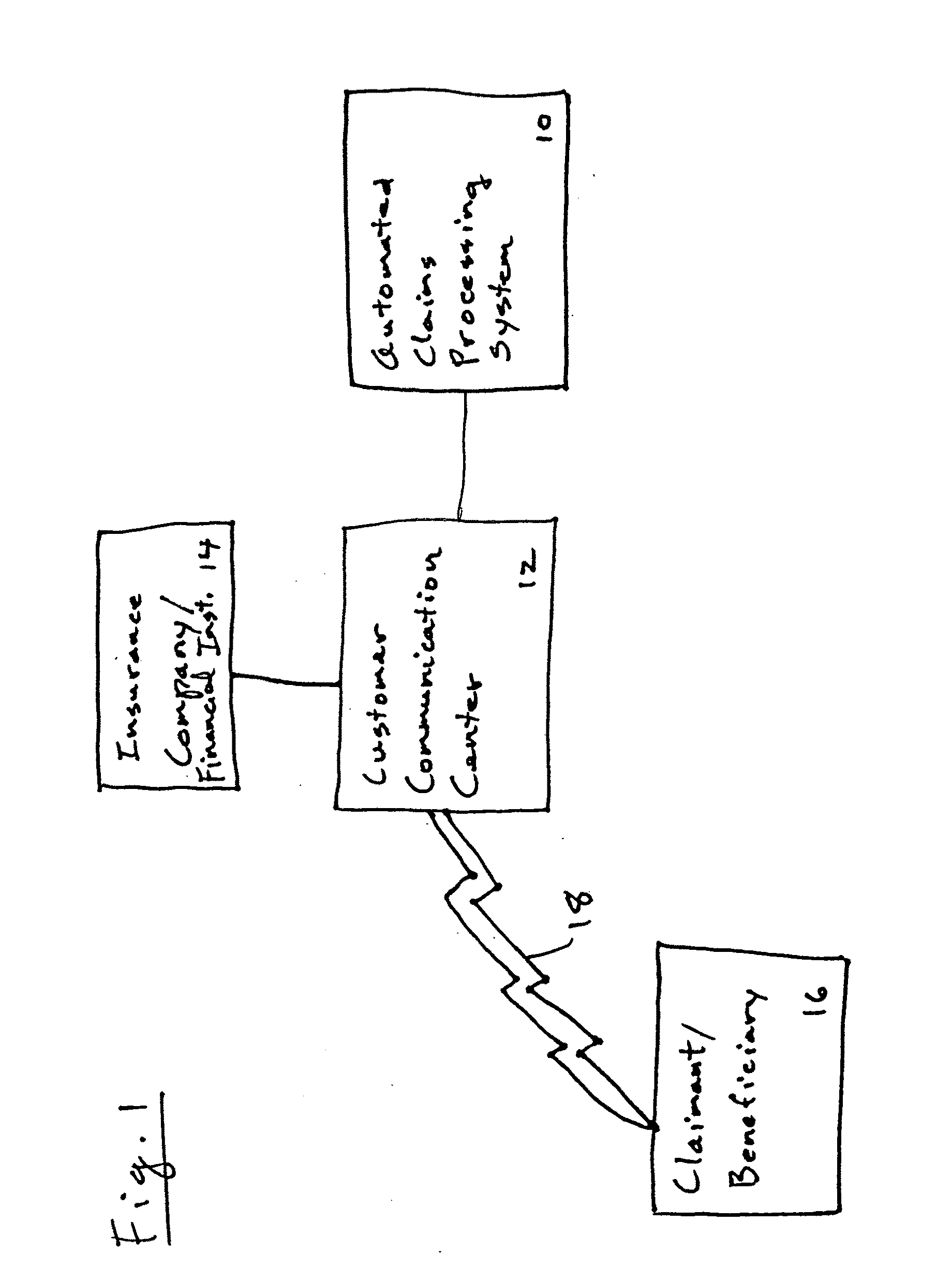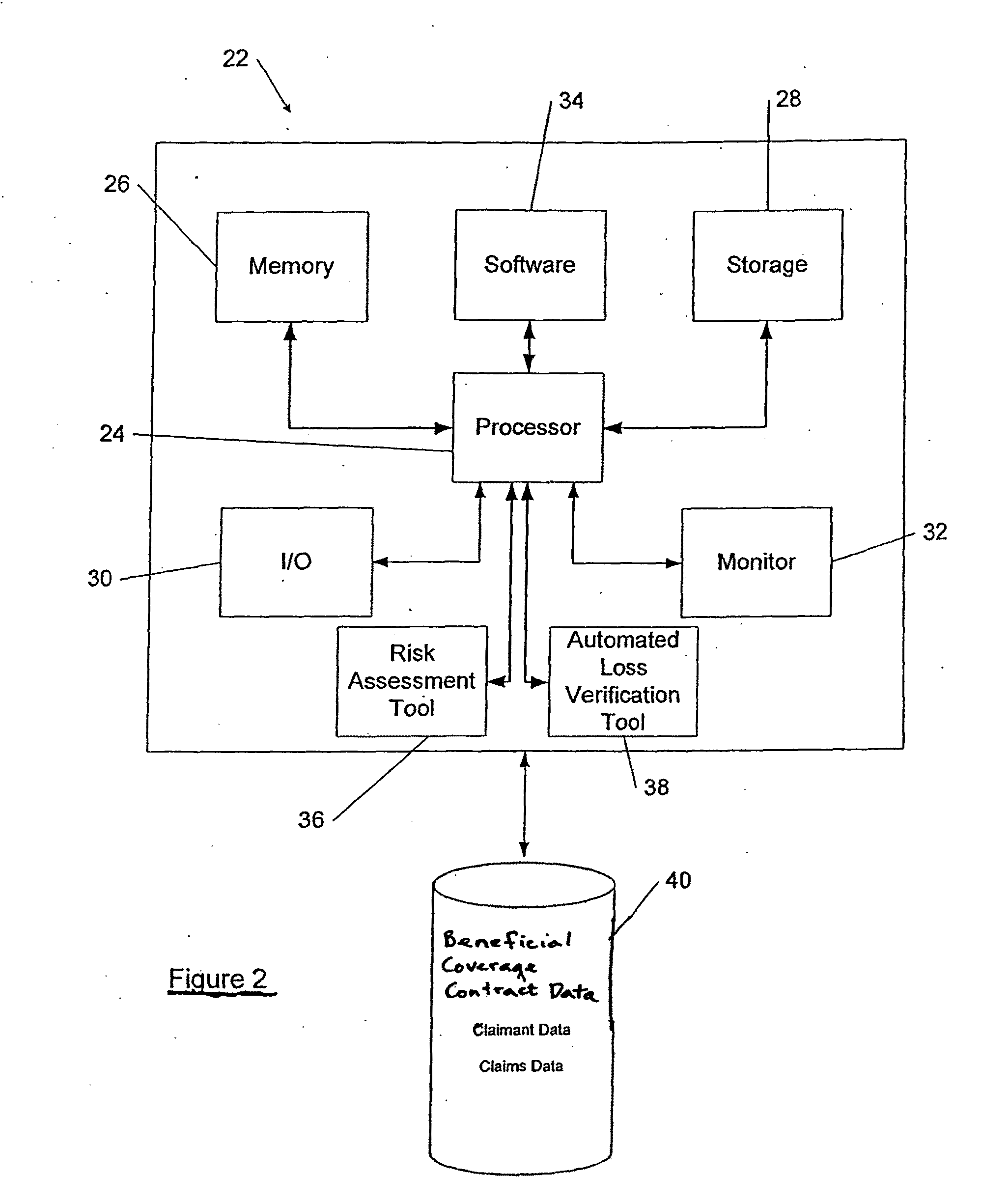Automated claims processing system
a claim processing system and automatic technology, applied in the field of insurance policy claim processing, can solve the problems of limit the worker's material and substantial duties, limit the duration of benefit payments, and limit the amount of benefits paid, so as to improve the claim experience for the claimant, increase the efficiency of the insurance company, and evaluate and approve claims extremely quickly
- Summary
- Abstract
- Description
- Claims
- Application Information
AI Technical Summary
Benefits of technology
Problems solved by technology
Method used
Image
Examples
example 1
[0095]An example of the application of the ALV process tool of the present invention to a life insurance policy claim is shown in FIG. 5. For the life insurance policy claim 150, the ALV process has pre-assigned two corroborating data sources: the Social Security Death Index (“SSDI”) 152 administered by the Federal Social Security Administration, and an obituary index 154.
[0096]The rules engine of the ALV process tool contains a TCL conversion table 156 pre-established by the insurance company that issued the life insurance policy. This table indicates that for a life insurance policy of the type that is the subject of the benefit claim, a risk assessment score (“RAS”) 158 of 1 translates to a required TCL score 159 of 30% for validating a claimed loss. A RAS of 2, on the other hand, requires a TCL score of 40%. The corresponding RAS values of 3, 4, and 5 translate into required TCL scores of 75%, 85%, and 100%, respectively, under the exemplary ALV process.
[0097]In accordance with ...
example 2
[0101]FIG. 6 provides an example of application of the ALV process of the present invention to an involuntary unemployment insurance (“IUI”) claim. The rules engine has pre-assigned the TALX TPA Job Verification Database 172 as a corroborating data source for verifying an IUI claim. This database will be accessed by all customers filing an unemployment claim. Not all employers are part of this database, so the ALV process first checks the TALX TPA Job Verification for the employer's name. A match contributes no confidence level to the AVV for the claim, but instead allows the ALV process to proceed.
[0102]Next, the ALV process checks the TALX TPA database for the unemployed person's name, social security number, and date of termination. If this information in the database record matches the information supplied by the claimant, then the ALV process contributes 100% confidence value to the AVV score for the claim. In this case, the claim, regardless of its RAS score 176, would be veri...
example 3
[0104]FIG. 7 provides an example of application of the ALV process of the present invention to a disability insurance policy claim. The disability insurance policy claim 190 has associated with it a look-up table 192 containing predetermined RAS scores 194 and associated TCL values 196. A variety of corroborating data sources 198 is also presented by the insurance company for purposes of verifying a disability insurance policy under the ALV process.
[0105]For example, Medical Provider List database 200 can be accessed for doctors and other medical services providers supplying services to a patient. If a name and telephone number for the medical services provider matches the information supplied by the claimant, then a 30% confidence level is contributed to the AVV score for the claim. In this case, a claim having a RAS score of 1 will be verified, while claims having a RAS score of 2-5 require additional corroborating source proof of their veracity.
[0106]The ICD9 Diagnosis / Specialty ...
PUM
 Login to View More
Login to View More Abstract
Description
Claims
Application Information
 Login to View More
Login to View More - R&D
- Intellectual Property
- Life Sciences
- Materials
- Tech Scout
- Unparalleled Data Quality
- Higher Quality Content
- 60% Fewer Hallucinations
Browse by: Latest US Patents, China's latest patents, Technical Efficacy Thesaurus, Application Domain, Technology Topic, Popular Technical Reports.
© 2025 PatSnap. All rights reserved.Legal|Privacy policy|Modern Slavery Act Transparency Statement|Sitemap|About US| Contact US: help@patsnap.com



